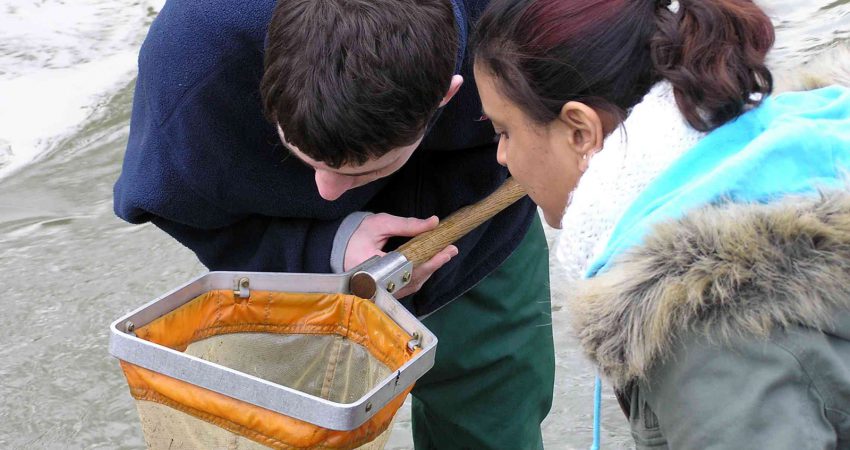
By Heather King - June 2013
PAPER CITATION
Sjaastad, J. (2012). Sources of inspiration: The role of significant persons in young people’s choice of science in higher education. International Journal of Science Education, 34(10), 1615–1636.
Many Western countries have experienced a decline in the numbers of young people studying STEM subjects in higher education. In response to this growing concern, many governments are funding initiatives aimed at promoting STEM to young people. But what forms of promotion are most effective? In particular, what sorts of people are most influential? In this study, 5,000 Norwegian students who had elected to study a STEM subject at an institution of higher education were asked about their sources of inspiration. The aim of the research was to identify and examine the role played by “significant persons” in shaping young peoples’ views of themselves and in influencing their educational decisions.
Theoretical Basis
In exploring young people’s educational decisions, Sjaastad builds on the work of Woelfel and Haller (1971), who originally conceptualised the idea of significant persons. The study also relies on aspects of role model theory that highlight the effect of interpersonal influence.
Sjaastad argues that “the individual’s conception of herself and her conception of STEM will influence the individual’s valuation of STEM-related educational choice. Any person who affects the individual’s view of herself or her view of STEM might contribute to a shift in her attitudes towards STEM”(p. 1618).
The shift in attitudes may be a major change or comprise small subtle modifications. Furthermore, many changes occur over time as an individual begins to form interests and opinions that are then validated—or not—by the individual’s social and cultural context. In other words, if people in an individual’s social group and wider community approve of, or even promote, certain choices, the individual is more likely to enact those choices.
Another key theoretical underpinning is self-concept and understanding how we come to know ourselves by observing how others react to us. Sjaastad notes that self-concept is manifested in various ways. For example, Higgins (1987) describes three manifestations of the self: The actual self is the attributes one believes one possesses, the ideal self is the attributes one would like to possess, and the ought self is the attributes one believes one should possess. Different types of significant persons, Sjaastad argues, affect different forms of self.
Research Design and Findings
The research began with a questionnaire administered to STEM students in the first term of their studies at an institution of higher education. The questionnaire, which included both open-ended and closed questions, built on the ROSE (Schreiner & Sjøberg, 2004) studies of the relevance of science education and on other previously validated tests. The open-ended element asked students to identify the significant persons affecting their decisions and to describe the ways in which they had been influenced.
In the open-ended data, teachers were mentioned by 23 percent of respondents, parents by 18 percent, siblings by 17 percent, friends by 13 percent, and celebrities by 5 percent.
Women were more than twice as likely as men to mention teachers. To explain this finding, Sjaastad cites Zeldin, Britner, and Pajares (2008), who argue that women rely more heavily than men on interpersonal interaction to build self-efficacy.
Students studying applied STEM subjects such as computer science or geoscience were less likely to mention their teachers than were students in more theoretical fields. Noting that the STEM curriculum in Norwegian secondary education is more academic than practical, Sjaastad suggests that teachers rarely have the opportunity to discuss applied STEM subjects with students.
Sjaastad found that parents were important sources of inspiration for STEM study, even if they themselves did not work in STEM or had limited experience of STEM. Students described the conversation and support of mothers in particular as having contributed to the choice to study STEM.
The study found that the significant persons who influence young people’s decisions to pursue STEM studies are those who know the young people personally and have an appreciation, of STEM subjects. Sjaastad argues that parents contribute to the formation of the ought self, while teachers help pupils define their actual selves.
Implications for Practice
This study clearly demonstrates that effective role models must have a degree of rapport and interpersonal understanding in order to influence young people’s decisions. In informal science education (ISE), this personal connection may be achieved during long-term programmes in, for example, afterschool clubs or museum summer camps.
Alternatively, ISE staff may act as facilitators, supporting members of a particular cultural community who work in STEM to provide ongoing mentoring and advice to young people. Additionally, they may want to focus on helping teachers and parents understand the array of STEM-related careers and how students can enter them.




